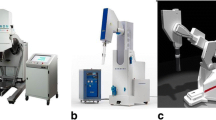Background and Purpose:
For intraoperative radiotherapy (IORT) during breast-conserving treatment four different techniques have been addressed: interstitial brachytherapy, an inflatable balloon with a central high-dose-rate source (MammoSite), a miniature orthovolt system (Intrabeam), and linac-based electron radiotherapy (IOERT). The dosimetric properties of these methods are compared.
Material and Methods:
Planning target volumes (PTVs) of the same size but of different shapes are assumed, corresponding to the technique’s specific situs. Dose distributions for the PTVs and for surrounding tissues are demonstrated by dose-volume histograms and a list of physical parameters. A dose inhomogeneity index (DII) is introduced to describe the deviation of a delivered from the prescribed dose, reaching its minimal value 0 in case of perfect homogeneity.
Results:
In terms of DII, IOERT reaches the lowest value followed by the MammoSite, the Intrabeam and interstitial implants. The surrounding tissues receive the smallest average dose with IOERT, closely followed by the orthovolt system.
Conclusion:
When comparing simplified geometric figures, IOERT delivers the most homogeneous dose distributions. However, in clinical reality PTVs often present asymmetric shapes instead of ideal geometries. Due to a strictly centric dose fall-off, any system with a round central applicator will have technical limits. During IOERT margin-directed applicator guidance is possible and interstitial brachytherapy allows for polygonal dose sha**. These techniques seem to be superior for asymmetric PTV irradiation.
Hintergrund und Ziel:
Für die intraoperative Radiotherapie (IORT) des konservativ operierten Mammakarzinoms sind vier Techniken in Gebrauch: die interstitielle Brachytherapie, ein aufblasbarer Ballon mit einer zentralen High-Dose-Rate-Quelle (Mammo-Site), ein Miniatur-Orthovoltsystem (Intrabeam) sowie Elektronen am Linac (IOERT). Die dosimetrischen Eigenschaften dieser Methoden werden verglichen.
Material und Methodik:
Für jede dieser Techniken werden Planungszielvolumina (PTVs) des gleichen Volumens, aber unterschiedlicher Form angenommen, die dem jeweiligen typischen Situs zum Zeitpunkt der Applikation entsprechen (Abbildung 1, Tabellen 1 und 2). Die Dosisverteilungen (Abbildung 2) inner- und außerhalb der PTVs werden mittels Dosis-Volumen-Histogrammen und einer Reihe von Parametern miteinander verglichen (Abbildung 3, Tabelle 3). Ein Dosisinhomogenitätsindex (DII) wird vorgestellt, der die Abweichung einer verabreichten von einer vorgeschriebenen Dosis beschreibt und im Fall einer perfekten Homogenität den Minimalwert 0 erreicht.
Ergebnisse:
In Bezug auf den DII erreicht die IOERT den niedrigsten Wert, gefolgt von MammoSite, dem Orthovoltsystem und den interstitiellen Implantaten. Das umgebende Gewebe erhält die geringste mittlere Dosis mittels IOERT, knapp gefolgt vom Intrabeam (Abbildung 3, Tabelle 3).
Schlussfolgerung:
Die IOERT zeigt die homogenste Dosisverteilung. In der klinischen Realität weisen PTVs aber häufig asymmetrische anstelle idealgeometrischer Formen auf. Durch den strikten zentralen Dosisabfall bestehen bei Systemen mit runden zentralen Applikatoren technische Limitationen. Während einer IOERT ist eine asymmetrische Applikatorführung möglich, die interstitielle Brachytherapie erlaubt eine polygonale Dosisformung, weshalb diese beiden Verfahren zur Erfassung asymmetrischer PTVs überlegen scheinen (Abbildung 4).
Similar content being viewed by others
Author information
Authors and Affiliations
Corresponding author
Rights and permissions
About this article
Cite this article
Nairz, O., Deutschmann, H., Kopp, M. et al. A Dosimetric Comparison of IORT Techniques in Limited-Stage Breast Cancer. Strahlenther Onkol 182, 342–348 (2006). https://doi.org/10.1007/s00066-006-1580-2
Received:
Accepted:
Issue Date:
DOI: https://doi.org/10.1007/s00066-006-1580-2




